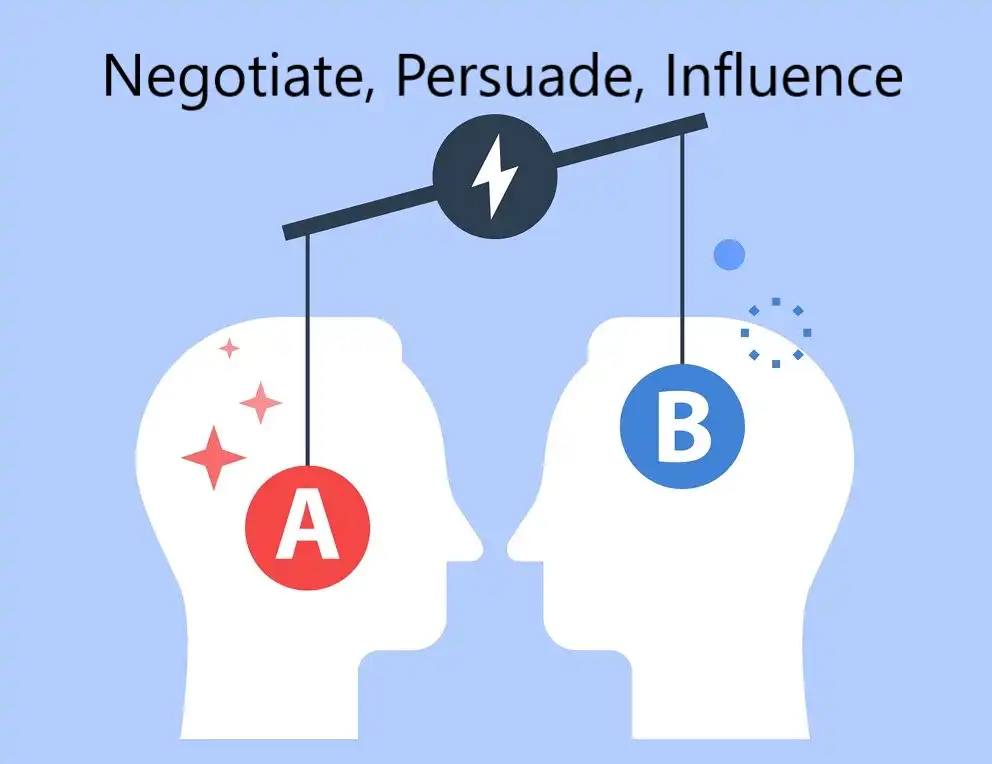
Persuasive Writing: Aim to Convince and Convert, Not Coerce
13 July 2021
Panchalee Thakur
Communicating with the purpose of persuading someone to not just think differently but also act in a particular way is no easy task. And with today’s audience, which is more informed and has a short attention span, communicators need to sharpen their persuasive writing skills even further.
‘Persuasion’ as a craft has been in the making for more than 2,000 years. Ancient Greek and Chinese philosophers have written on persuasive communication practices in speech and writing. Both have laid considerable stress on the ‘good character’ of the person doing the persuasion. The Chinese added another dimension to it – the importance of understanding the ‘social status’ and ‘background’ of the audience.
Today’s marketing axioms may at first glance seem like a far cry from these principles, but on a closer look you will find that they are quite the same. ‘Good character’ is nothing but credibility and trust that buyers look for in a brand. The ‘social status’ and ‘background’ of the audience refer to the listening and profiling of readers or customers before we decide how to persuade them.
What Makes Persuasive Writing Different?
Persuasive writing is action-oriented. Firstly, it must express, impress and, especially in business, motivate the reader to act in a desired way. Secondly, it should be able to do all this even with the writer remaining anonymous in most cases. Thirdly, it must be able to do this subliminally through text that cajoles, but never coerces, the reader.
Reviews, criticisms, blog posts and editorials are some common forms of communication designed to lead a reader to adopt a certain position on a subject matter. How much readers concur with what’s in the copy depends on how powerfully the writer puts forth the argument.
Persuasion takes place in degrees. You may be persuaded to open an email with a subject line that says ‘limited offer’ as it piques your curiosity. But you may not find the email body text convincing enough to sign up for that offer. If you are the sender of the email, you may argue that the communication succeeded in crossing the first threshold. And is hence, partially successful. But someone else may argue that since the email failed to elicit the response you aimed for, the exercise was a total failure.
This is an insightful article that analyses the persuasion techniques. This was employed from time to time by those who worked closely with Apple founder Steve Jobs to convince him to rethink his position.
The 3-Rule Credo You Cannot Ignore
Communication that only impresses but does not elicit a response is not persuasive writing. Inspirational yes, but not influential. So what must your writing contain to rise above the mediocre and drive someone to change her mind or take an action?
Greek philosopher Aristotle pointed to three intrinsic characteristics of persuasive writing – ethos, pathos and logos, or credibility, emotion and logic. They are not mutually exclusive characteristics but they supplement one another in ways that may not be immediately apparent.
Let’s take a case study as an example. A case study must follow a logical flow of thought – a problem, followed by the approach adopted, the solution and benefits – to make an impression on the reader’s mind. Now if the case study includes the name and testimonial of the customer rather than keeping the customer name confidential, it becomes far more convincing. That’s because the name adds credibility. You can also add an emotional touch by reporting the day-to-day difficulties that the customer’s team faced before they implemented your solution. Also highlight how their day at work is far more productive and fulfilling now.
Like writer Maya Angelou says, “The idea is to write so that people hear it and it slides through the brain and goes straight to the heart.”
Read our previous blog on how brands are using storytelling to create an emotional appeal in their communications.

Employing the right techniques
Persuasive writing is a tedious exercise. There is no set mechanism or universally applicable methodology to follow. To draw as well as sustain reader engagement, writing must constantly evolve to fit the task at hand. Here are a handful of tactics to strike the right chords.
- Use of repetition to enforce your idea or opinion: Repetition is a common literary device that writers and orators use to reinforce an ideas. Among the most famous speeches with rhetorical devices are Martin Luther King’s “I have a dream” and Barrack Obama’s victory speech in 2008 that included “Yes, we can” seven times. That doesn’t mean parroting the same stuffs. It means finding novel ways of presenting the same idea or opinion.
- Consistency in your thoughts and actions: If there is a disparity between what you say and what you do, readers will keep their distance from you. Sounding logical is not enough; credibility counts. In persuasive writing, it means ensuring that your messaging is consistent across branding and marketing, and your actions back you up. For example, if you run a branding campaign on diversity and inclusion in time for International Women’s Day but your people policies reflect a regressive mindset, your efforts will appear insincere and opportunistic.
- Explaining ideas for ease of understanding: Often communicators assume their readers see things the way they do and have a similar level of understanding. To persuade is to be able to explain a subject in the reader’s language. Writing simple, lucid text is an effective way to make readers comprehend the subject better. Break complex topics into smaller subsections. Bulleted lists are also effective.
- Use of testimonials, referrals as social proof: Buyers are looking for social proof before they put their money anywhere. Testimonials, referrals and recommendations are a great way to persuade them. But overdependence on it can be detrimental. Weave it in gently in your text, rather than making it the main selling point.
- Acknowledging problems and grievances: When it comes to business writing, the primacy of empathy cannot be overstated. Empathy or the experience of knowing what it is like to be in another’s shoes is what gives your persuasion substance. Consumers are more likely to veer towards companies who know their pain points and design a response based on what their customers tell them.
In this earlier blog post, I wrote about listening being one of the basic tenets behind empathetic communication.
What Persuasive Writing is Not
Whether it is in business or academics, there are several myths about persuasive writing. We will bust a few of them here:
- Making ‘buy now’ as the starting point: Your primary goal may be to get people to buy your product and/or service. But it cannot be the starting point. Writing with the sole purpose of getting a customer to click the ‘buy now’ button is too self-serving, and hence unlikely to work. Instead persuasive writing is about focusing on the customer and creating a need.
- Ignoring all sore points: Admitting to a mistake or acknowledging a customer problem will not diminish your brand. Not addressing an objection or a challenge in your communication will not make it go away; instead it may grow into a bigger problem. A persuasive writer is one who is considerate, listens, discovers and addresses problem areas.
- Basing it all on facts alone: Facts are of course important but facts alone do not make persuasive writing. Build a story or a commentary around the facts to make it more appealing. For example, too much of data can put off a reader; instead put the data into perspective so as to give it more weight.
Persuasion is a tool that no business can ignore. A lot of what we know about persuasive writing today has been handed down to us through the works of writers and philosophers. But it is a craft that communicators need to constantly learn, unlearn and relearn as they go. Know the basic rules of communication, be open to experimenting, and observe and fine-tune based on your experience.
